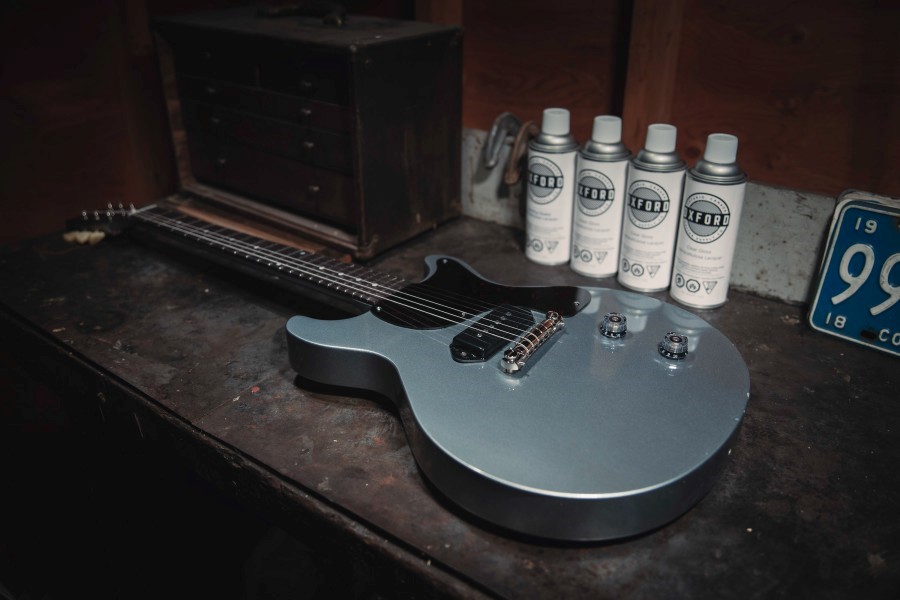In the world of coatings and finishes, and specifically instrument finishes, Nitrocellulose Lacquer is an option that has stood the test of time. Whether you’re an experienced builder or a hobbyist working on a refin, understanding the properties of this finish can be useful for proper application. So, if you’ve ever wondered what nitrocellulose lacquer is and why it is so highly regarded as a finishing option, here it is!
Nitrocellulose is known as the first man-made plastic. Cellulose is a substance found in plant walls which helps the plant to remain rigid. Common sources for production are the cotton plant and wood pulp. The cellulose is mixed with nitric acid sulfuric acid, which in turn produces cellulose nitrate (nitrocellulose).
How is Nitrocellulose Lacquer Created?
Nitrocellulose lacquer is created when cellulose nitrite is dissolved into a mixture of solvents such as acetone, naphtha, toluene, and xylene. When the lacquer is sprayed, the solvents begin to off-gas and dry. As the solvents leave the freshly applied finish, a layer of nitrocellulose is created. Subsequent nitrocellulose guitar finish coats will build the thickness of the finish, resulting in a beautiful final product!
Nitro lacquer quickly became the finish of choice for many after it was introduced in the 1920s. It was heralded as a paint that could be accurately applied with a spray gun, off-gassed relatively fast compared to other contemporary finishes, and it dried extremely hard – which meant that it could be buffed to a high gloss.
Another beneficial trait of nitrocellulose guitar paint was the ability to accept pigments and dyes, allowing instrument builders to offer pieces in a wide array of fun, lively, and stylish colours. Prior to this, most guitars were adorned with natural or sunburst finishes.
Nitrocellulose Guitar Lacquer Over Time
Over the last few decades, many guitar builders and players alike have maintained their fondness for the qualities that nitrocellulose exhibits. The finish has a much better ability to let the instrument resonate since it dries thin and very hard. Repairs are relatively simple since new applications will burn (melt) into existing lacquer. Nitrocellulose guitar lacquer also ages differently than other types of paint. Time and exposure create a patina which can be quite beautiful. Exposure to UV light will cause the lacquer to subtly amber over time, edges will soften, and as trace amounts of solvents continue to evaporate, the finish slowly sinks into the grain pattern of the wood.
Now that you know what nitrocellulose is, continue your journey by visiting by learning how to finish your guitar!


